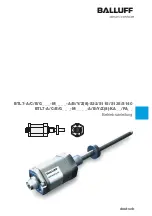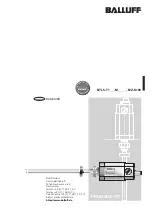
ATmega328P processor
The ATmega328P was chosen because it has enough processing power and I/O to handle
all the tasks required here. It is also common and inexpensive, and lots of QRP Labs
products already used it, bringing economies of scale in both the kit preparation and the
coding. The processor is operated at its maximum rated 20MHz system clock speed.
The code is all written in C and is not open source. While the same ATmega328 processor
is used in the popular Arduino Uno products, there is no relation between code written for
the Arduino environment and the custom code written for this CW transceiver.
Elimination of tuning clicks
Some constructors of radio receiver projects that use the Si5351A report loud clicks every
time the frequency is changed. The cause of these clicks is one or both of two underlying
issues:
a)
Faults in the software configuring the Si5351A
b)
Power line or radiated noise from the microcontroller/LCD back into the sensitive
receiver
The first of these is not an issue here since we have already extensive experience using the
Si5351A and have perfected its configuration.
The second issue is important to address. Every time the microcontroller updates the
Si5351A configuration to cause it to change frequency, it typically also writes the new
frequency to the LCD. There is a burst of activity in the microcontroller, and on the digital
control signals to both the Si5351A and the LCD. The LCD controller chip will also be doing
some work to effect the changed display. All of these digital transitions can radiate noise
into the receiver front end. Changes in power consumption cause noise on the supply lines
which can also be converted into noise detected in the receiver front end.
To combat the radiation issue, the ATmega328P microcontroller is sited away from the RF
and audio signal paths, right at the front of the PCB so that the connections between the
processor and LCD module and the microcontroller are kept as short as possible, to
minimize radiated noise.
To keep noise out of the supply, the 5V supply to the microcontroller and LCD module is
filtered by 47uH inductor L6 and 470uF capacitor C47.
In combination, these measures ensure that there are no “clicks” in the audio when tuning
the receiver; just a small “flutter” as I call it, which is a natural consequence of the sudden
change in frequency (Fourier rules).
Liquid Crystal Display module
The transceiver uses an HD44780-compatible LCD Module with 16 characters by 2 rows.
The LCD is operated in the 4-bit mode in order to minimize the I/O pins used. No data is
read back from the LCD which means the Read/Write pin can be grounded. In total only 6 I/
O pins are used for writing to the LCD.
QCX-mini assembly Rev 1.05_Fr
109
Summary of Contents for QCX-mini
Page 14: ...QCX mini assembly Rev 1 05_Fr 14...
Page 16: ...QCX mini assembly Rev 1 05_Fr 16...
Page 17: ...QCX mini assembly Rev 1 05_Fr 17...
Page 18: ...QCX mini assembly Rev 1 05_Fr 18...
Page 20: ...Main board Display board Controls board QCX mini assembly Rev 1 05_Fr 20...
Page 26: ...QCX mini assembly Rev 1 05_Fr 26...
Page 30: ...QCX mini assembly Rev 1 05_Fr 30...
Page 40: ...QCX mini assembly Rev 1 05_Fr 40...
Page 44: ...QCX mini assembly Rev 1 05_Fr 44...
Page 49: ...QCX mini assembly Rev 1 05_Fr 49...
Page 59: ...QCX mini assembly Rev 1 05_Fr 59...
Page 77: ...QCX mini assembly Rev 1 05_Fr 77...
















































